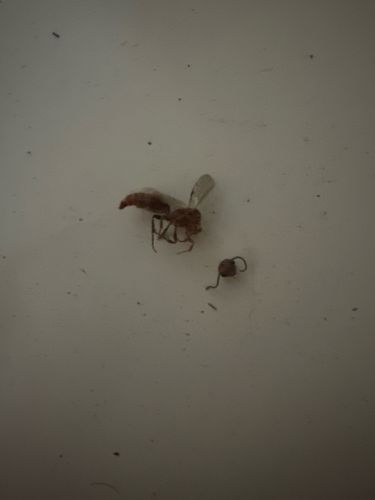Winged Ant or Queen Ant
Scientific Name: Formicidae (various genera and species)
Order & Family: Hymenoptera, Formicidae
Size: Typically 6 to 15 mm for winged reproductives, though some species can be smaller or larger.

Natural Habitat
Widely varied, depending on the species. Terrestrial, often found in soil, under rocks, in wood, or within human structures.
Diet & Feeding
Opportunistic omnivores; specific diets vary by species and caste. Workers forage for sugars, proteins, and fats. Some species specialize in seeds, fungi, or other insects.
Behavior Patterns
The image appears to show a winged ant, likely a reproductive (male or queen) that has recently flown or is preparing for a nuptial flight. After mating, queens shed their wings to start new colonies. Ants live in highly organized social colonies with distinct castes (queen, male, worker).
Risks & Benefits
Generally beneficial as decomposers, aerating soil, and preying on other insects. Some species can be pests, invading homes for food, and certain species (e.g., fire ants) can deliver painful stings or bites. Winged ants entering homes are often a sign of a nearby colony.
Identified on: 9/19/2025